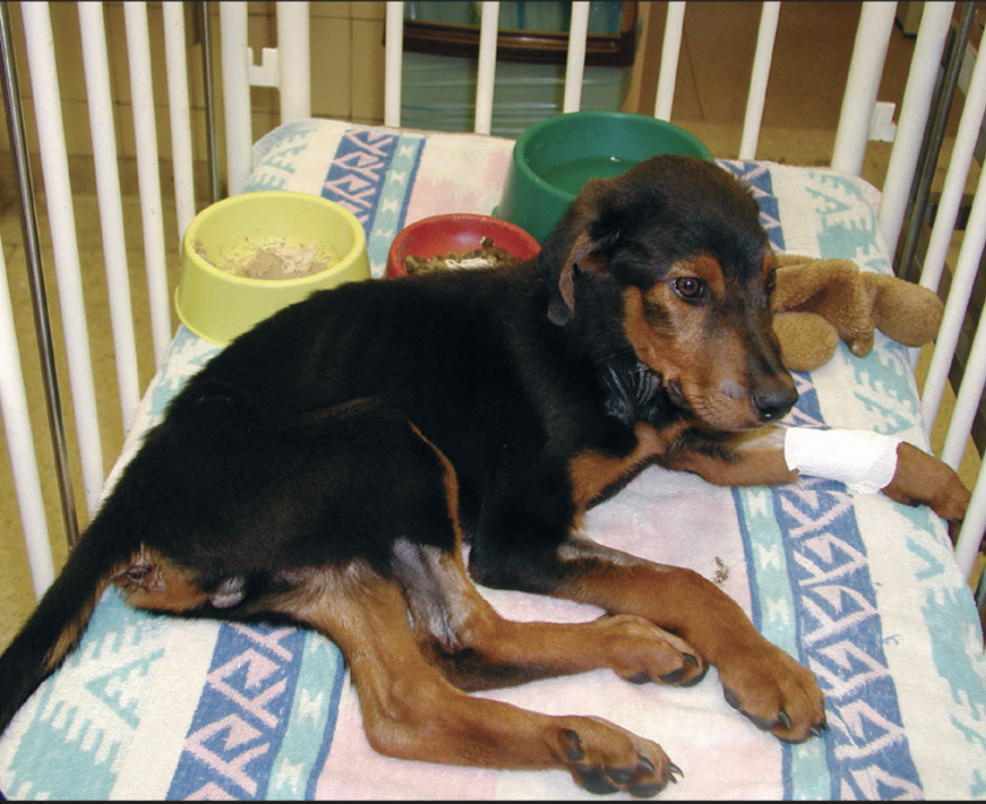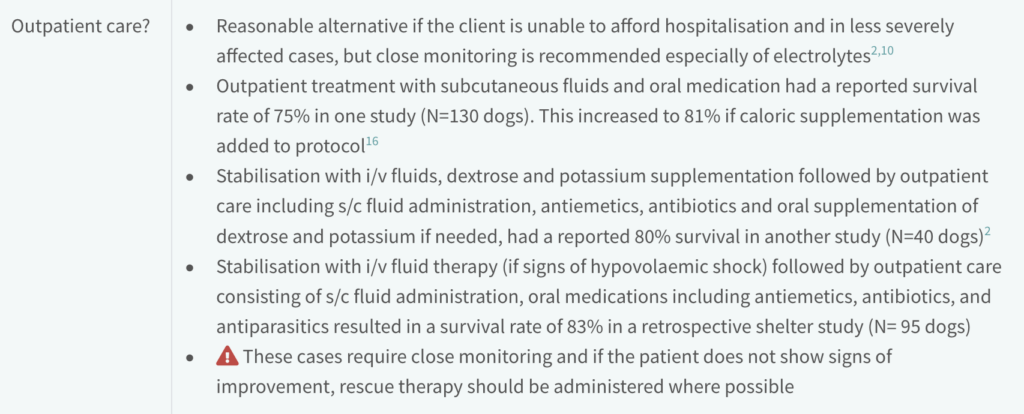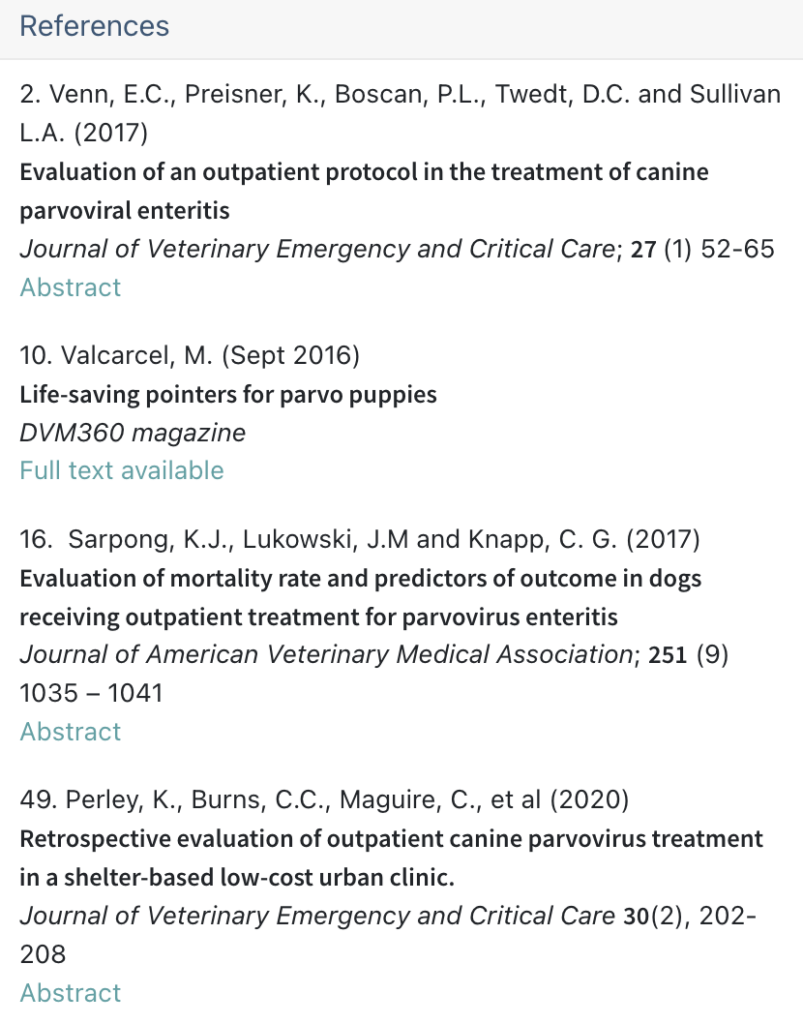PARVOVIRUS
Are there any alternatives to intensive hospitalisation?

Dilemma:
You have a client with a young dog “Bramble” diagnosed with parvovirus who does not have pet insurance. She is determined to do everything possible for her puppy but is very concerned about the costs and her puppy’s separation anxiety. While you have recommended intensive hospitalisation, the owner is asking if there are any other options available.
Ask VETbytes?
Use VETbytes to find evidence-based alternative treatments

Client communication
Discussing the treatment options for parvovirus with a client
Vet: Hospitalisation and intensive care can offer an 80-90% survival rate for puppies with parvovirus. If hospitalisation is not feasible, we have alternative treatment options to consider. While these approaches are not as extensively studied, we have enough information to help us perform a cost-benefit analysis and make an informed decision.
One option is to hospitalise Bramble briefly, administer intravenous fluids, and stabilise him. We could then continue with outpatient care, including fluids given under the skin and necessary medications. This approach has shown an 80-83% survival rate.
Another option is to treat Bramble entirely as an outpatient with fluids given under the skin and oral medications. This method has a reported survival rate of 75%, which can increase to 81% with added calorie supplements. This approach works best for less severely affected or stable cases, but please bear in mind that Bramble will still require regular (daily) check-ups at the practice.
While the risk of complications is slightly higher than with intensive care, these methods are likely to reduce the cost and would mean Bramble would spend more time at home, which may reduce his stress.
Both these alternatives require close monitoring to ensure your Bramble is improving. If he doesn’t improve, we might need to adjust the treatment, and intensive hospitalisation may become necessary.
What is the evidence?
